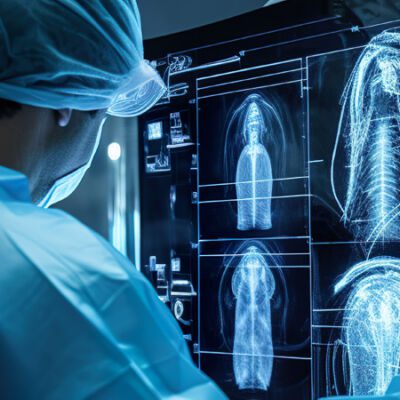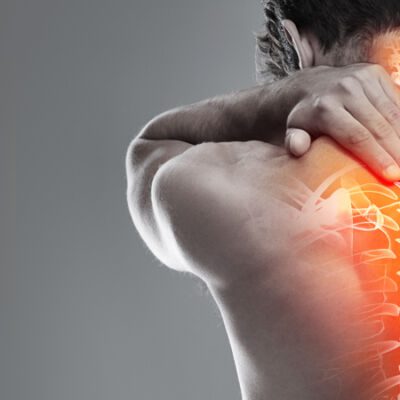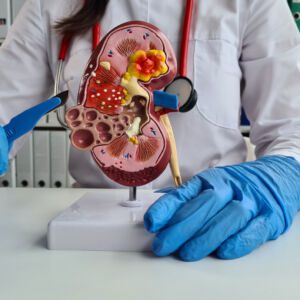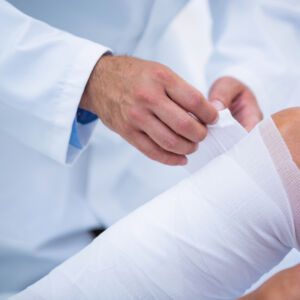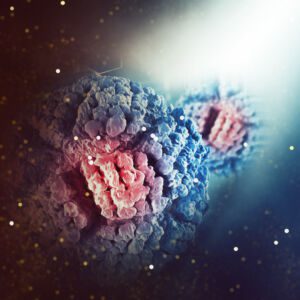In our spine surgery department, we treat injuries and diseases of the spine and spinal cord.
HERNIATED LUMBAR AND CERVICAL DISCS
Herniated lumbar or cervical disc can be the cause of a lot of pain. It often results from an injury caused by falling, twisting or lifting.
Herniated disc is the part of an intervertebral disc that has shifted or slipped out of place. Herniated discs in the lumbar and cervical spine can become trapped, causing pain and sometimes inflammation (swelling and redness of the tissue). This can lead to serious complications if not treated properly.

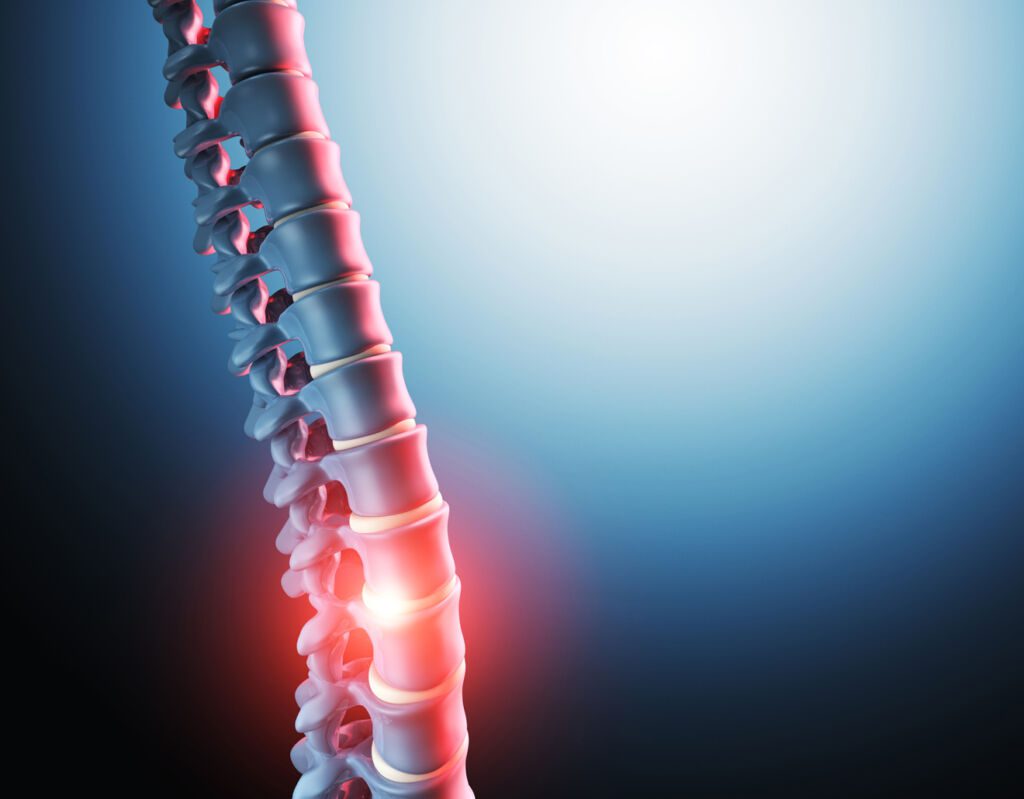
SLIPPED VERTEBRAE
Responsible for lower back pain or sciatica-like pain in the lower limbs.
Vertebral slippage is a condition in which one vertebra slips forward onto the vertebrae below it. Vertebral slippage can be mild or severe and requires immediate medical attention.
Slipping can be caused by a weakened ligament or the formation of a bone spur on the underside of the vertebrae that encroaches on the space below. This can cause pain and weakness.
SCOLIOSIS
Scoliosis is a condition in which the spine curves to one side. It develops slowly over time and can start at an early age.
Scoliosis can start at birth and progress with age. This is called congenital scoliosis. In people who are born with a natural curvature of the spine, scoliosis can be caused by muscle imbalance or weakness.
Scoliosis can be classified as follows:
Idiopathic scoliosis – when there is no known cause for the curvature of the spine and no spinal abnormalities are found;
Congenital scoliosis – when you are born with the condition; or
Acquired scoliosis – caused by an injury, illness or other cause after birth.


FRACTURES AND SPRAINS OF THE CERVICAL, DORSAL AND LUMBAR SPINE
Fractures and sprains of the cervical, dorsal and lumbar spine (treated in our spine surgery department) are common injuries that can result from falls or car accidents.
The most common spinal cord injuries include herniated and ruptured discs. Treatment options include correct immobilisation of the affected area and surgery.
Fractures can be classified according to different systems. For example, they can be described by location (cervical, thoracic and lumbar spine), type of injury (compression or bending) or direction (transverse or oblique). Fractures involving a single vertebra are called simple fractures; those involving two or more vertebrae are called compound fractures.
Sprains are ligament injuries that can be mild, moderate or severe, depending on the extent of damage to the ligament tissue.
WHAT IS OSTEOPOROSIS?
Osteoporosis is a disease that weakens and fractures bones. Osteoporosis occurs when bone tissue breaks down faster than it can be rebuilt, making the bones more porous and therefore more likely to break.
Osteoporosis is most common in older people, but can occur at any age. It is important to be aware of the risk factors for osteoporosis so that it can be prevented or controlled at an early stage.
Osteoporosis is a silent disease, often causing no symptoms until it’s too late. But if you know your risk factors for osteoporosis and how to prevent it, you can protect yourself from developing this potentially life-threatening disease.
WHAT IS CERVICAL SPONDYLOTIC MYELOPATHY?
Cervical spondylotic myelopathy (CSM) is a progressive disease that affects the spinal cord, causing weakness, numbness and loss of function in the arms and legs. It can also affect other body systems, including the respiratory system, gastrointestinal tract, bladder, blood vessels and skin.
CSM is caused by a narrowing of the spinal canal in people with degenerative changes to the cervical spine (neck). This narrowing puts pressure on the spinal cord and its nerve roots as they emerge between two vertebrae at each level of the neck. The resulting nerve compression can cause pain, muscle weakness or paralysis, numbness or tingling in the arms or legs, and loss of bladder control.
Symptoms usually develop gradually over several months or years. They may be mild at first, but progress rapidly if left untreated.
Doctors treat CSM with medication (anticonvulsants), physiotherapy and surgery.
You ask, our teams answer.
F.A.Q
Spinal disorders are conditions that affect the spinal cord, nerve roots or vertebrae. These conditions can cause pain, numbness and other symptoms.
The spinal cord is a bundle of nerves that connects the brain to the rest of the body. The spinal cord runs from the base of the skull down the spine. It carries messages between the brain and the spinal cord. The nerves in the spinal cord carry these messages to the rest of the body, for example to move the hands or legs.
Spinal conditions can be caused by:
– Injury to the neck, such as whiplash from a car accident
– Ageing of the spine, also known as degeneration
– Tumours (cancer) in or around the spine
– Infection of part of the spine
Spinal conditions can be divided into two general categories:
– Congenital spinal conditions are present at birth and generally cannot be treated. An example of a congenital spinal condition is spina bifida, an opening in the spine that causes nerve damage and functional disability.
– Acquired spinal conditions develop later in life as a result of trauma or other causes. Spinal stenosis (narrowing of the spinal canal) is an example of an acquired condition.
Spinal surgery for spinal stenosis is a medical procedure in which part of the vertebrae is removed to make room for the spinal cord. It is also known as decompression surgery because it relieves pressure on the spinal cord and can improve symptoms.
It can be used to treat spinal stenosis, which can cause pain in the back and legs and tingling or numbness in the arms or hands. It can also cause muscle weakness.
Spinal stenosis can develop when there is too much bone around the spinal canal, narrowing it and putting pressure on the spinal cord. This can happen after an injury, if you have arthritis, or if you wear high heels regularly.
Ligament damage is the most common type of sports injury. Ligaments are strong, fibrous bands of tissue that connect one bone to another and help joints move.
Ligament injuries range from stretching or tearing to complete rupture. They are usually caused by a traumatic event, such as a fall or twist, but can also be the result of overuse due to repetitive stress on the ligament.
Symptoms of a ligament injury include joint pain and swelling, bruising and stiffness. If you think you’ve suffered a ligament injury, see a doctor immediately for appropriate treatment and rehabilitation.
A spinal fracture is a break in the bones of the spine. It can be caused by an injury or trauma, such as a fall or car accident.
A spinal fracture can cause severe pain and disability if not treated properly. The aim of spinal fracture treatment is to relieve pain and prevent further damage to the spine.
Treatment options include:
- Surgery to stabilise the spine
- Medications such as painkillers, muscle relaxants and steroids
- Physiotherapy
We present to you some articles relating to pathologies treated in our Mediterranean clinic, with an effective and efficient medical and paramedical team.
Spine surgery is a complex medical procedure that often raises many questions and concerns.
Scoliosis is an abnormal curvature of the spine that can cause pain and breathing problems. Learn about the causes, symptoms and treatment options in this comprehensive guide.
Herniated disc can cause severe pain and mobility problems. Learn about the symptoms, causes and treatments in this comprehensive guide.



